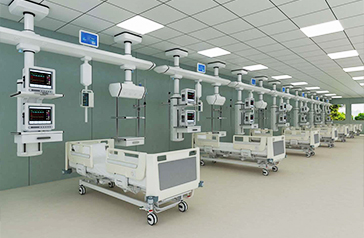Welcome to our websites!
tilt in space wheelchair
The Benefits of Tilt-In-Space Wheelchairs Redefining Mobility and Comfort
In the realm of mobility aids, tilt-in-space wheelchairs have emerged as innovative solutions designed to enhance the lives of individuals with varying degrees of physical disabilities. By allowing users to tilt their seating position backwards, these wheelchairs provide numerous benefits that significantly improve comfort, pressure relief, and overall health. This article explores the advantages of tilt-in-space wheelchairs and emphasizes their crucial role in promoting independence and well-being among users.
Understanding Tilt-In-Space Technology
Tilt-in-space wheelchairs are specifically engineered to allow the entire seat and backrest to tilt simultaneously, shifting the user's weight towards the back of the chair. This feature contrasts with traditional wheelchairs, which typically allow for fixed seating positions. The adjustable tilt mechanism can often be controlled manually or electrically, catering to the individual needs of the user or caregiver. Such versatility is crucial for people with limited mobility, ensuring that they can adapt to different situations and environments with ease.
Enhanced Pressure Relief
One of the standout benefits of tilt-in-space wheelchairs is their ability to reduce pressure points on the body. Prolonged sitting can lead to pressure injuries, particularly for individuals with limited sensation or mobility. By tilting the chair, the user’s weight is redistributed, alleviating pressure on vulnerable areas such as the pelvis, thighs, and back. This feature is essential for maintaining skin integrity, preventing ulcers, and promoting overall health. Regularly modifying the tilt angle can also stimulate blood circulation, reducing the risk of complications associated with prolonged sitting.
Improved Comfort
Comfort is paramount for wheelchair users, especially for those who spend significant portions of their day seated. Tilt-in-space wheelchairs provide a personalized seating experience, accommodating individual preferences and needs. The ability to adjust the angle of tilt allows users to find a position that feels most comfortable, whether for relaxation, social interaction, or activities like reading or using a mobile device. This adaptability helps reduce fatigue and discomfort, making daily tasks much more manageable.
tilt in space wheelchair

Enhanced Posture and Spinal Alignment
Proper posture is vital for overall health and functionality. Tilt-in-space wheelchairs aid in maintaining optimal posture, benefiting spinal alignment. The backward tilt supports the natural curvature of the spine and helps to facilitate a more ergonomic seating position. This adjustment can be particularly advantageous for individuals with neuromuscular disorders or those who require additional trunk support, as it can reduce the risk of developing musculoskeletal issues over time.
Increased Independence
For many individuals with disabilities, independence is a key aspect of quality of life. Tilt-in-space wheelchairs contribute to increased independence by making it easier for users to engage in daily activities. With the ability to tilt back, users can more comfortably interact with their environment, whether at home, in the workplace, or during social outings. This feature encourages greater participation in community life and can help combat feelings of isolation that many wheelchair users may experience.
Encouraging Social Interaction
Tilt-in-space wheelchairs can also enhance social interaction. By allowing users to adjust their position, these chairs facilitate better eye contact and engagement during conversations. The ability to tilt back and change positions can make users feel more included and present in social situations, which is essential for emotional health and well-being.
Conclusion
The tilt-in-space wheelchair represents a significant advancement in mobility technology, offering a wide array of benefits that enhance comfort, health, and independence. By promoting pressure relief, improving posture, and encouraging social interaction, these wheelchairs empower users to lead fuller lives. As we continue to innovate in the field of assistive technology, it is imperative to recognize the importance of tailored solutions that respond to the unique needs of individuals with disabilities. Tilt-in-space wheelchairs epitomize this approach, making a profound difference in the daily lives of many, fostering not just mobility, but dignity and self-worth.
-
Transforming Healthcare with Hospital FurnitureNewsJun.24,2025
-
Rehabilitation EquipmentNewsJun.24,2025
-
Mobility and Independence with WheelchairsNewsJun.24,2025
-
Freedom of Mobility with Our Rollator WalkersNewsJun.24,2025
-
Comfort and Independence with Commode ChairsNewsJun.24,2025
-
Bathing Safety and Independence with Shower ChairsNewsJun.24,2025
-
Navigating the Wholesale Landscape of Electric Mobility Solutions: Key Considerations for Power Wheelchair DealersNewsJun.10,2025











